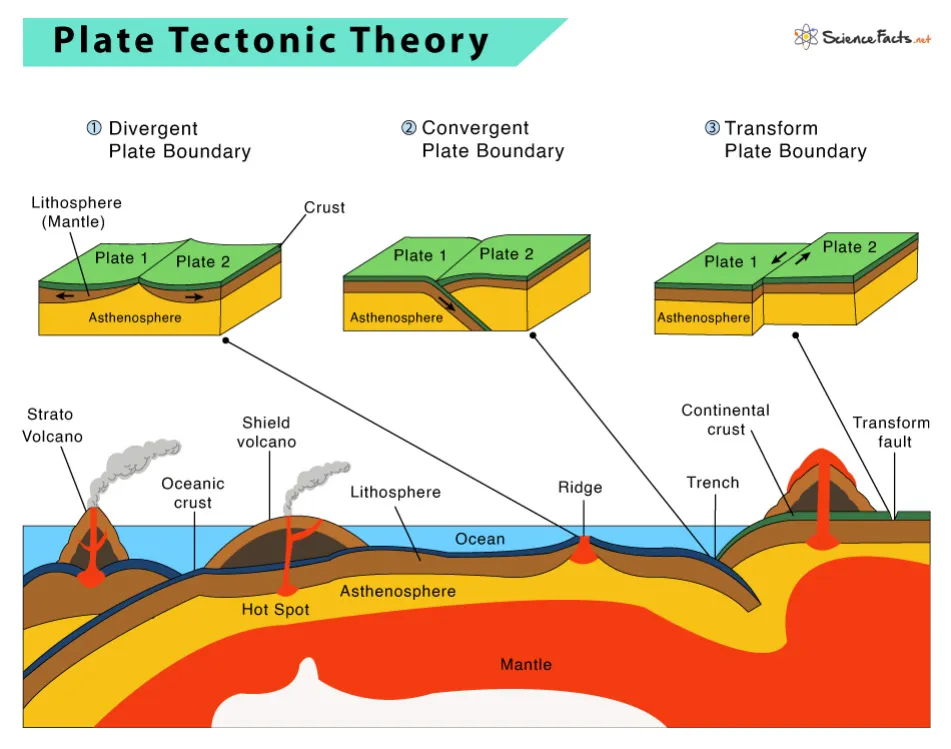Geography Grade 10 Folding and Plate Tectonics Notes

Welcome to your Grade 10 Geography notes on Folding and Plate Tectonics! This section will guide you through the fundamental concepts of how the Earth’s crust behaves under different conditions, leading to the formation of various landforms. By understanding these processes, you will gain insights into the dynamic nature of our planet.
Plate Tectonics
- Introduction to Plate Tectonics
- Definition: Plate tectonics is the theory explaining the movement of the Earth’s lithosphere, which is divided into tectonic plates.
- Key Concepts:
- Lithosphere: The rigid outer layer of the Earth.
- Asthenosphere: The semi-fluid layer beneath the lithosphere on which tectonic plates move.
- Major Plates: The Earth’s lithosphere is divided into several major plates such as the Pacific Plate, North American Plate, Eurasian Plate, and African Plate.
- Types of Plate Boundaries
- Divergent Boundaries: Where plates move apart, creating new crust (e.g., Mid-Atlantic Ridge).
- Convergent Boundaries: Where plates move towards each other, often causing one plate to sink beneath the other (e.g., Himalayas).
- Transform Boundaries: Where plates slide past each other horizontally (e.g., San Andreas Fault).
Folding
- Introduction to Folding
- Definition: Folding occurs when rocks are deformed due to compressional forces, causing them to bend rather than break.
- Key Terms:
- Anticline: An upward-arching fold.
- Syncline: A downward-arching fold.
- Limb: The sides of a fold.
- Hinge: The line where the fold is most sharply curved.
- Causes of Folding
- Compression: Folding is primarily caused by compressional forces that squeeze the rocks together.
- Stress and Strain: Understanding how rocks respond to stress and strain is crucial to studying folding.
- Examples of Folds
- Simple Fold: Symmetrical with both limbs dipping equally.
- Overturned Fold: One limb is tilted beyond vertical.
- Recumbent Fold: The fold is lying on its side.
Importance of Understanding Folding and Plate Tectonics
Grasping the concepts of folding and plate tectonics is essential for understanding the formation of mountains, earthquakes, and volcanic activity. These geological processes shape the Earth’s landscape and influence many aspects of human life.
Downloadable Notes
- 2-Geo-Gr-10-GEOMORPHOLOGY-4-ANSWER-SHEET-4-FOLDING-and-PLATE-TECTONICS (Download)
- 2-Geo-Gr-10-GEOMORPHOLOGY-WORKSHEET-4-FOLDING-and-PLATE-TECTONICS (Download)
These resources will provide further insights and help reinforce your understanding of folding and plate tectonics. Make sure to review the worksheets and answer sheets to test your knowledge and grasp the concepts thoroughly.
